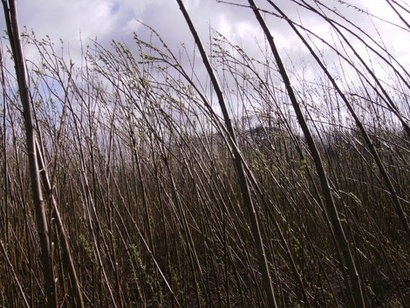
The researchers used micro-CT scans to show that the trees respond to being tilted by producing a sugar-rich gelatinous fibre that helps them stay upright. Willow trees are suitable for widespread cultivation for biofuels because they produce lots of accessible sugar. They are also fast-growing and can tolerate harsh environmental conditions, such as windy slopes and poor soil. Trees grown in harsh conditions or polluted soil can produce even better biofuel resources because the sugar they produce is more accessible, thereby requiring less energy to harvest it.
Growing the trees at a tilt stimulates natural stress thereby encouraging them to produce up to five times more sugar than plants grown normally. Researchers at Imperial College London worked with experts at the Natural History Museum, the University of Surrey and Rothamsted Research Centre to use X-ray micro-computed tomography (CT scanning) to examine the willow's growth through high resolution 3D images. This enabled them to see the changes in the willow at a cellular level and how they affected the plant's growth. They found that tilted willows prolonged the life of certain cells in order to produce a sugar-rich, or gelatinous, fibre, to help them stay upright. The team were able to measure how much longer the cells needed to stay alive to produce the special fibre.
“It was difficult to see why the trees were releasing so much more sugar when stressed in nature or grown at an angle” said Dr Nicholas Brereton, from Imperial's Department of Life Sciences. “Being able to visualise the differences occurring at a microscale, or cellular level, allowed an insight into the biology behind the macroscale effects on the whole tree. Willow is a great crop because it grows in really inhospitable places. It can add value to marginal land and is also useful for helping to clean up areas of polluted land. Our research will help the biofuel sector select and use growing sites and conditions where no other crops can survive.”
The research was funded by the Biotechnology and Biological Sciences Research Council, and has been published in BMC Plant Biology. The team will now use even higher resolution CT scanning to investigate the gelatinous fibres in more detail. This will enable them to measure how much of the fibre is produced by different plants, helping them to identify which species of willow are likely to be the world’s best second generation biofuel producers.
Image courtesy of Imperial College London
For additional information:
Biotechnology and Biological Sciences Research Council (BBSRC)

